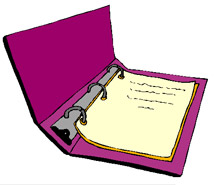To design and study a Half Wave Rectifier.
Introduction
A rectifier is an electrical device that converts alternating current (AC), which periodically reverses direction, to direct current (DC), which flows in only one direction. The process is known as rectification. When a single rectifier unit is placed in series with the load across an ac supply, it converts alternating voltage into uni-directional pulsating voltage, using one half cycles of the applied voltage, the other half cycles being suppressed because it conducts only in one direction. Unless there is an inductance or battery in the circuit, the current will be zero, therefore, for half the time. This is called half-wave rectification. As already discussed, diode is an electronic device consisting of two elements known as cathode and anode. Since in a diode electrons can flow in one direction only i.e. from cathode to anode so the diode provides the unilateral conduction necessary for rectification. This is true for diodes of all types-vacuum, gas-filled, crystal or semiconductor, metallic (copper oxide and selenium types) diodes. Semiconductor diodes, because of their inherent advantages are usually used as a rectifying device. However, for very high voltages, vacuum diodes may be employed.
The half-wave rectifier circuit using a semiconductor diode with a load resistance RL but no smoothing filter is there. The diode is connected in series with the secondary of the transformer and the load resistance RL, the primary of the transformer is being connected to the ac supply mains. The primary function of Half-wave and Full-wave rectification system is to establish a DC level from a sinusoidal input signal that has zero average (DC) voltage. The Half-wave voltage signal normally established by a network with a single diode has an average or equivalent DC voltage level equal to 31.8 % of the peak value Vm, that is given as:







